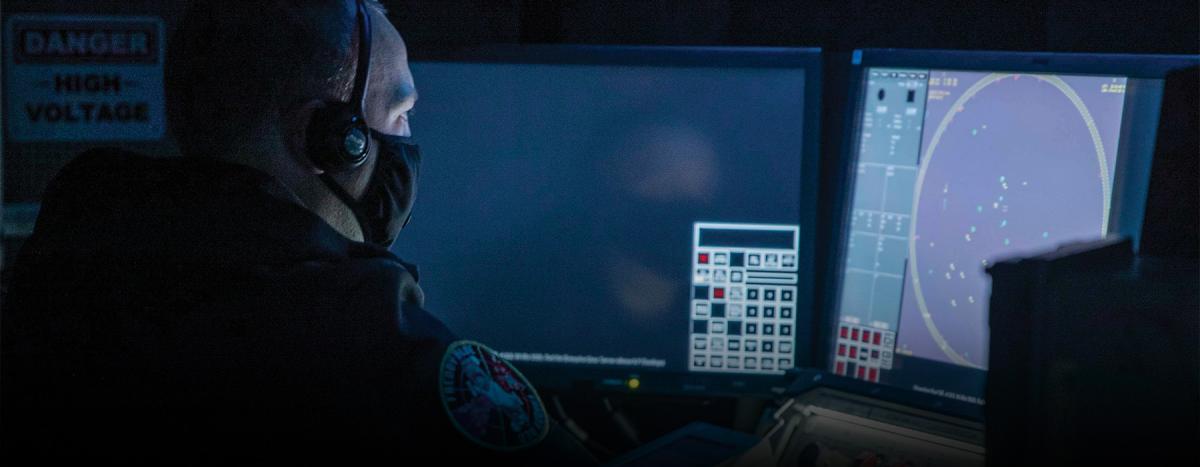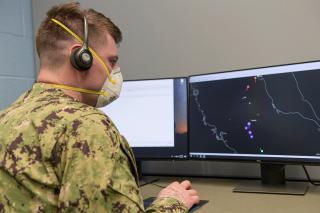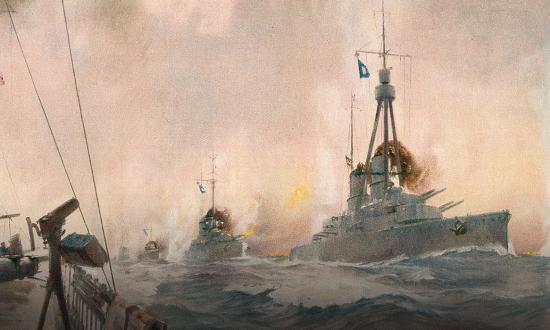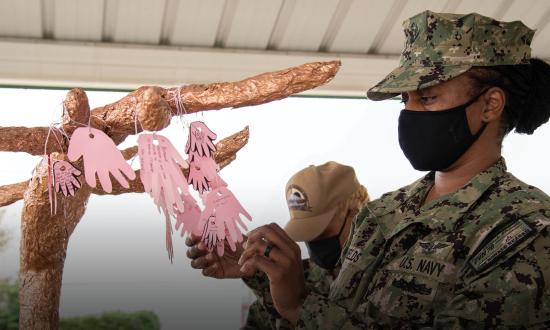The Navy has struggled to fully man its deploying warships for years. This is no secret and is in no way restricted to any single rating, though some Navy enlisted classifications (NECs) are harder to fill than others. Some of these NECs belong to the operations specialist rating: W16A, air intercept controller (AIC); W17A, supervisory air intercept controller (AICS); and W27A, air intercept controller weapons and tactics instructor (AIC WTI).
Arleigh Burke–class guided-missile destroyers and Ticonderoga-class guided-missile cruisers are billeted for one AICS and three AICs. The AICs and AICS are separated into six levels. Level 0 is a new AIC Basic Course graduate. Level 1 is required to be obtained within six months of graduation and allows the AIC to control basic missions with supervision from an AICS. Levels 2 and 3 both show that the controller has obtained increasing levels of knowledge, experience, and the ability to control more difficult missions with less and less supervision. A Level 4 is an AICS. AICS can be obtained only by senior Level 3 controllers who have completed the requirements for Level 4, including the four-week AICS course of instruction. Level 5 can be obtained only by attending the Naval Air Warfare Development Center Air Intercept Controller Strike Fighter Weapons and Tactics Instructor course, also known as TOPGUN. There are fewer than 20 enlisted AIC WTIs in the Navy at any given time.
With promulgation of Commander, Naval Surface Forces/Commander, Naval Air Forces, Instruction 1211.2A in January 2018, AICs of all levels are required to conduct a minimum of three missions each month to maintain proficiency. If a month is missed, the AIC must conduct a check flight before completing any other controlled mission. A check flight is a live mission that reviews all aspects of the expected level of knowledge and controlling ability based on the AIC’s level.
Prior to January 2018, the three missions had to be conducted at a minimum of every six months and were part of a rolling calendar: Controllers could conduct the mandatory three missions in January and another three by July to maintain their proficiency. But if they did the first three in January and another three in April, the six months would reset, and the new due date would be October. One thing that remains the same is that if a controller does not control a mission for six months, he or she is required to attend the AIC requalification course—a three-week refresher. Despite the significant increase in control requirements after January 2018, there has not been an increase in resources available for shipboard air controllers.
Navy ships operate on a continuing cycle called the Optimized Fleet Response Plan (OFRP). OFRP is divided into several cycles or phases: training, deployment, sustainment, and maintenance. The two types of missions that can meet the AICs’ monthly proficiency requirements are simulated and live. From the start of the training cycle until conclusion of the post-deployment sustainment phase, the required monthly missions must be live. Live missions are defined as controlling live fighters or controlling a simulated run in which a Level 5 AIC WTI plays the part of the pilot. During the maintenance phase of the OFRP cycle, controllers are authorized to conduct simulated missions with a qualified AICS to maintain proficiency.
The Navy has nine active carrier air wings consisting of 37 active fighter squadrons stationed at three geographic locations around the world: Iwakuni, Japan; Virginia Beach, Virginia; and Lemoore, California. The service has worked to ensure its squadrons have not only the best aircraft, but also the best pilots in the world. Why not do the same for the controllers they rely on for painting the picture of airborne threats and helping ensure the safety of the flight?
Of the seven homeports for major surface combatants—Norfolk, Virginia; Mayport, Florida; San Diego, California; Everett, Washington; Pearl Harbor, Hawaii; Yokosuka, Japan; and Rota, Spain—only Norfolk has local fighter squadrons to support air controller qualifications and monthly proficiency requirements. The other option for live air control is to send controllers, typically accompanied by an AICS, to Iwakuni or Lemoore; Fallon, Nevada (home of TOPGUN); or Naval Air Station Key West, where squadrons often go to conduct training. But there is another solution: Realign AIC and AICS billets directly to fighter squadrons.
By shifting AIC and AICS billets to squadrons, the Navy can ensure its investment in training these hard-charging sailors pays dividends. Not only would it enable controllers to meet and exceed all current requirements, it also would significantly increase the controller’s access to training. Controllers everywhere would be able to regularly train alongside the pilots with whom they deploy and build relationships and trust with aircrew. It is long past time to stop thinking of air intercept control as a collateral duty and instead shift it to a high-priority, primary duty. If the Navy wants lethal enlisted warfighters, it needs to take their training and readiness seriously.
The Navy has approximately 90 AICS and 270 AIC billets among destroyers, cruisers, and amphibious assault ships. Only approximately 85 percent are manned at any given time—and the large majority of those are likely Level 1 or 0. A Level 1 controller provides limited capability based on what he or she is authorized to control in accordance with Instruction 1211.2A and always requires an AICS during missions. In addition, with the current available resources, it is unreasonable to expect a junior controller to increase from Level 0 (a course graduate) to 3 during a single training cycle while still meeting all other shipboard requirements. By adding two AICS and seven AIC billets to all fighter squadrons, not only would the Navy benefit from a near seamless billet transition, but naval aviators also would gain the advantage of having a controller available for every mission.
Where on the carrier would the Navy put an extra 40 or so sailors? While conducting integrated training or when deploying with a carrier strike group, controllers could be assigned/distributed to each air control unit (ACU) asset—namely, cruisers and destroyers—to ensure maximum ACU capability is maintained. This also would save AICs from being stagnant on ships that are not as likely to control aircraft, such as ballistic missile defense vessels, while still providing the flexibility to use them when needed. In theory, shifting air controller billets to this fleet template would increase not only training opportunities for controllers, but also lethality, usefulness, and reliability for non-carrier air control units.
What about shipboard manning? The Navy should study operations specialist manning at sea and consider taking AICs off ships. But it also should consider increasing other areas, such as antisubmarine tactical air controller (ASTAC) billets. Destroyers and cruisers are billeted for three ASTACs and often get underway with only one or two. ASTACs on board ships with an embarked helicopter detachment are required to stand watch for the entire duration of flight operations, which makes meeting circadian rhythm sleep requirements challenging, if not impossible.
This is just another example of how the Navy could more efficiently man its ships while helping its sailors.







